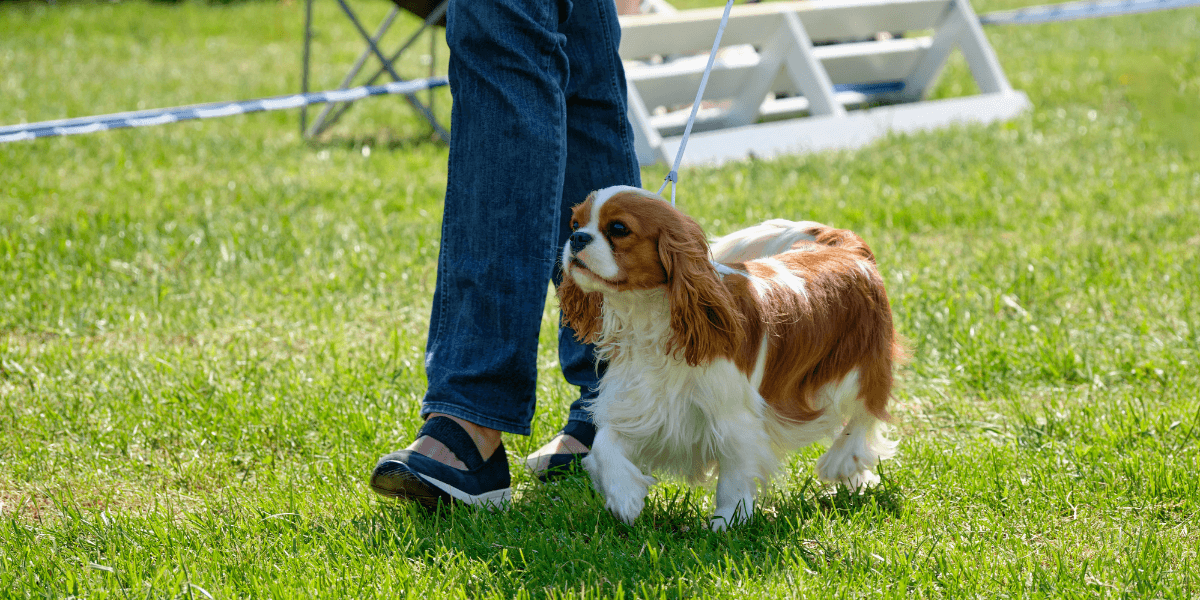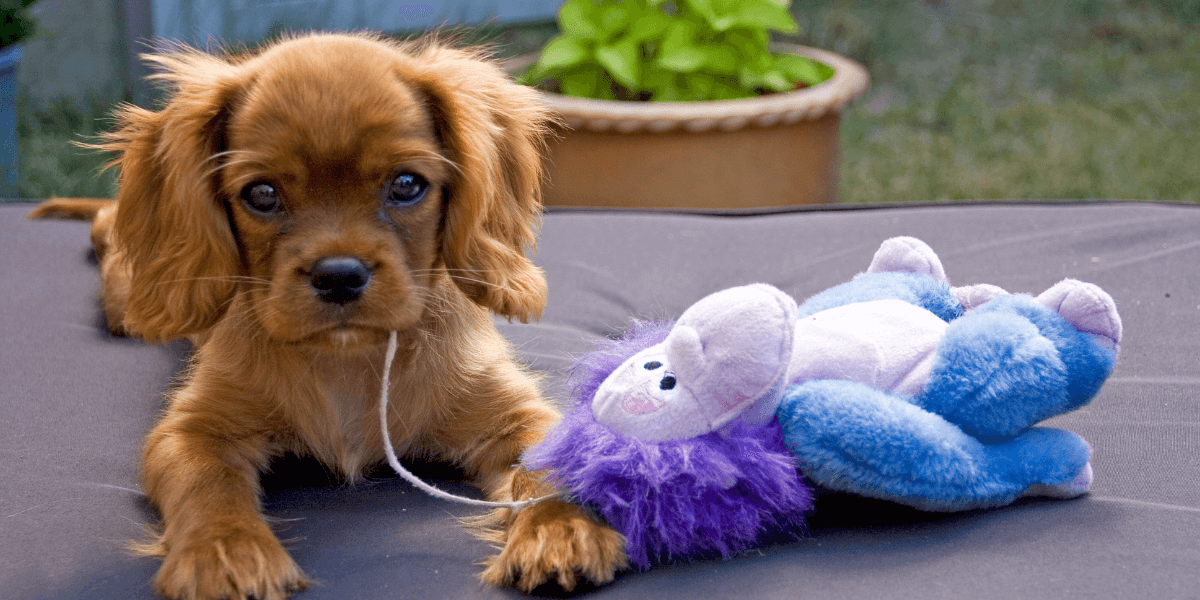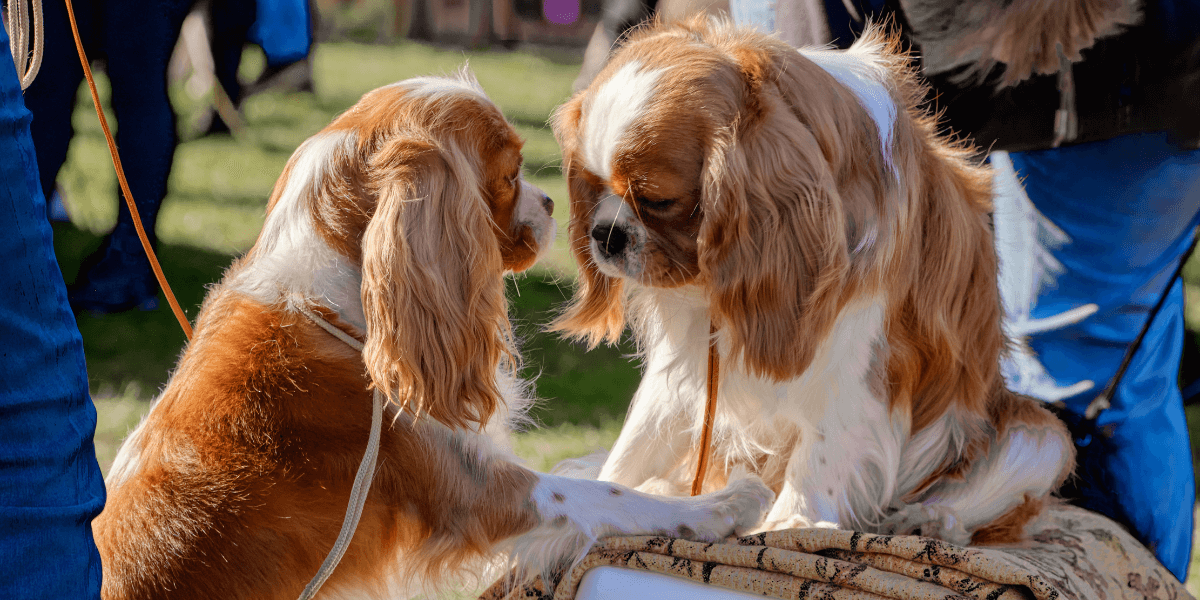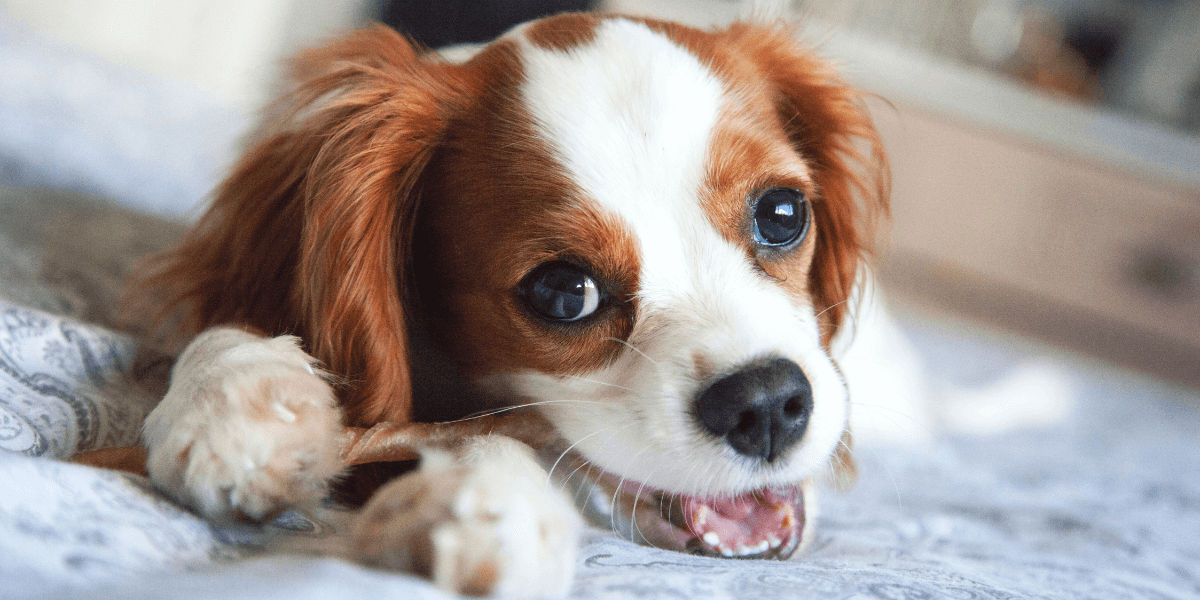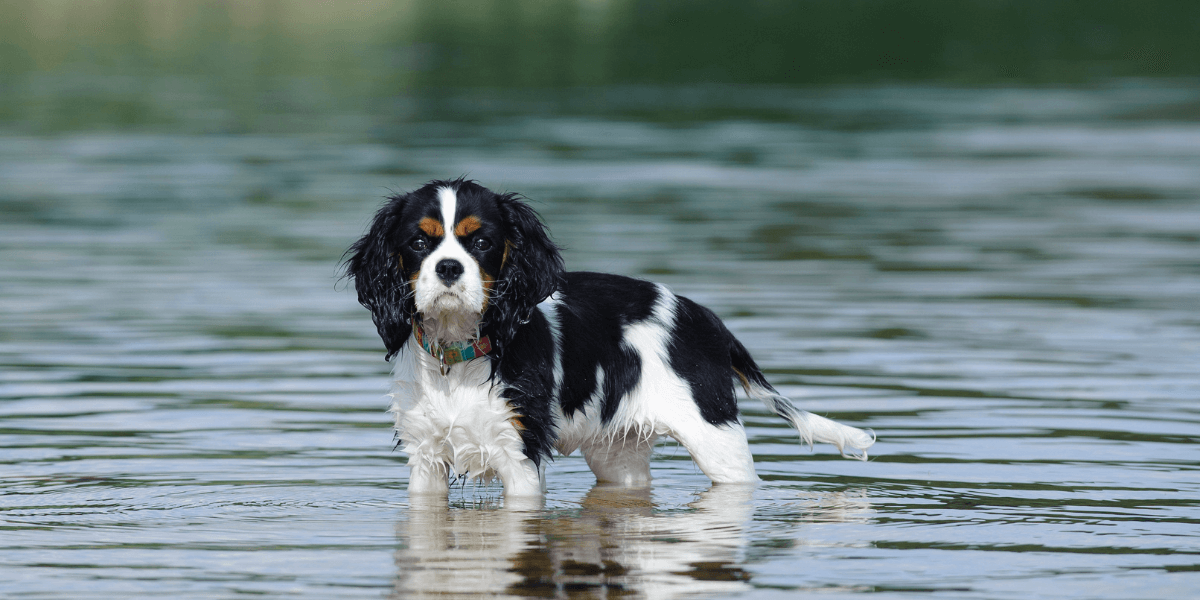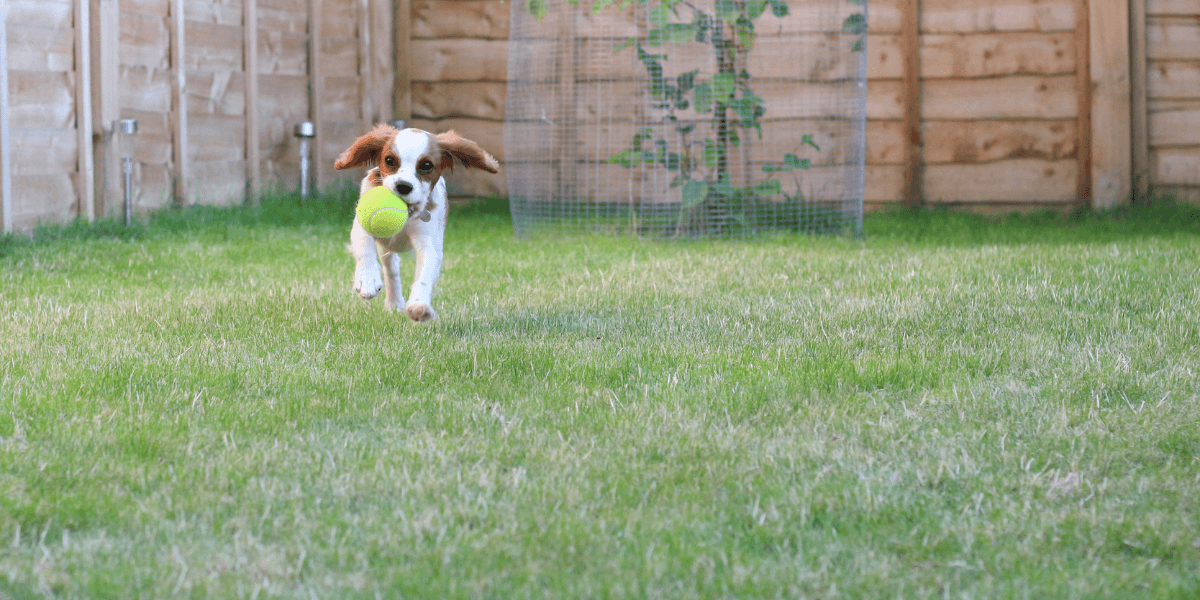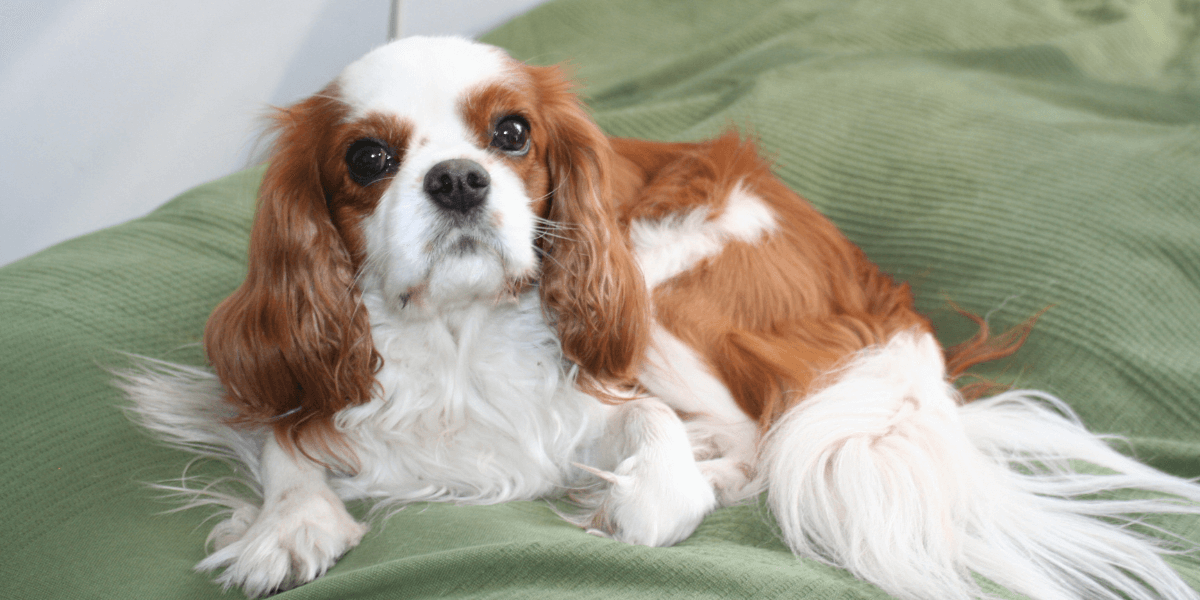Introduction
Cavalier King Charles Spaniel exercise needs are key to their health and happiness.
- Physical activities keep this breed mentally and physically engaged
- A mix of exercises helps prevent obesity, a common issue in this breed
- Mental stimulation is crucial alongside physical exercise for balanced well-being
- Tailor the exercise routine to your dog’s age, energy levels, and health conditions
- Ensuring regular exercise leads to a happier and healthier Cavalier
1. Daily Walks
Daily walks are fundamental to meeting a Cavalier King Charles Spaniel's exercise needs.
- Morning routine: A 30-minute walk covers Cavalier King Charles Spaniel exercise needs
- Evening stroll: An evening walk ensures your Cavalier gets enough daily exercise
- Leash training: Good leash manners make walks more enjoyable for both of you
- Walk pace: Maintain a moderate pace to keep your Cavalier engaged and focused
- Explore new routes: Introduce new walking paths to add variety to the routine
- Weather considerations: Adjust the duration of walks based on weather conditions
- Hydration check: Bring water on longer walks to keep your dog hydrated
- Walk duration: Aim for a total of 60 minutes of walking each day
2. Playtime at Home
Engaging in playtime at home keeps your Cavalier active and mentally stimulated.
- Fetch games: Use soft toys for safe indoor fetch games
- Tug-of-war: A gentle tug-of-war session helps build strength and focus
- Interactive toys: Puzzle toys provide mental stimulation during play
- Hide and seek: Hide toys or treats to encourage your dog’s sniffing instincts
- Chase games: Gentle chase games help your dog burn off extra energy
- Toy rotation: Rotating toys keeps playtime fresh and exciting for your Cavalier
- Short play sessions: Frequent short play sessions prevent boredom and restlessness
- Supervised play: Always supervise indoor playtime to ensure safety
3. Socialization with Other Dogs
Socialization plays a crucial role in keeping your Cavalier active and well-adjusted.
- Dog park visits: Off-leash play at dog parks provides physical and social activity
- Playdates: Arrange regular playdates with dogs your Cavalier knows and likes
- Supervised interaction: Monitor interactions to prevent rough play or conflicts
- Group walks: Join group walks to meet other dogs and owners in a controlled setting
- Training classes: Enroll in group training sessions for social and mental engagement
- Positive reinforcement: Reward good behavior during socialization to encourage it
- Size matching: Socialize your dog with similar-sized dogs to avoid injury
- Dog-friendly outings: Visit cafes or parks to boost your Cavalier’s social exposure
4. Mental Stimulation Games
Mental stimulation is as important as physical exercise for your Cavalier's well-being.
- Puzzle feeders: Use puzzle feeders to make mealtime mentally stimulating
- Training drills: Regularly practice tricks and commands to keep your dog sharp
- Snuffle mats: Encourage your dog’s natural foraging behavior with snuffle mats
- Interactive feeding: Use feeders to boost your Cavalier’s problem-solving skills
- Obstacle course: Create a simple indoor obstacle course for mental and physical exercise
- Name game: Teach your Cavalier to recognize and retrieve toys by name
- Treat hunt: Hide treats around the house to create a fun scavenger hunt
- Problem-solving tasks: Challenge your dog with tasks that stimulate thinking skills
Enhance your Cavalier's mental agility with training tips from Great Dane experts.
5. Swimming
Swimming offers a low-impact exercise that is perfect for Cavaliers with joint concerns.
- Supervised swims: Always supervise your dog’s swimming sessions for safety
- Shallow water start: Begin in shallow water to build your dog’s confidence
- Life vest use: Equip your dog with a life vest for added safety in deeper water
- Short sessions: Keep swim sessions brief to avoid overexertion
- Positive experiences: Use treats and toys to create a positive association with water
- Warm water preference: Choose warm water to prevent your dog from getting too cold
- Post-swim hydration: Ensure your dog drinks fresh water after swimming
- Thorough drying: Dry your dog completely after swimming to avoid skin issues
6. Agility Training
Agility training keeps your Cavalier fit and mentally engaged, meeting exercise needs.
- Beginner courses: Start with basic agility obstacles like tunnels and low jumps
- Consistent practice: Regular practice meets Cavalier King Charles Spaniel exercise needs
- Positive reinforcement: Reward your dog with treats to encourage agility training
- Gradual progression: Slowly increase the difficulty of obstacles as your dog improves
- Safety measures: Ensure all agility equipment is secure and safe for use
- Bonding opportunity: Agility training provides quality bonding time with your dog
- Fun sessions: Keep the sessions fun and engaging to maintain your dog’s interest
- Short but regular: Keep training sessions short but consistent for the best results
Apply Bernese Mountain Dog training techniques to boost your Cavalier's agility skills.
7. Rest and Recovery
Rest and recovery balance your Cavalier’s active lifestyle and prevent overexertion.
- Quiet time: Provide a calm space for your dog to rest after exercise
- Comfortable bedding: Ensure your dog has a comfortable bed for quality rest
- Hydration importance: Always provide fresh water during rest periods
- Post-exercise massage: Gentle massages help relax muscles after a workout
- Activity monitoring: Adjust exercise intensity based on your dog’s energy levels
- Regular sleep routine: Establish a consistent sleep schedule for overall health
- Rest days: Incorporate rest days into your dog’s routine to allow full recovery
- Watch for fatigue: Look for signs of tiredness and adjust activities as needed
Ensure optimal rest for your Cavalier by exploring top-rated orthopedic beds for large breeds.
FAQs
1. How much exercise does a Cavalier King Charles Spaniel need?
- At least one hour of exercise daily is recommended for this breed
2. Can Cavaliers participate in high-intensity sports?
- Yes but cautiously, ensure the activities are safe and suited to your dog's capabilities
3. Is swimming suitable for the Cavaliers?
- Yes, swimming is a low-impact exercise that is great for Cavaliers
4. How can I tell if my Cavalier is getting enough exercise?
- A well-exercised dog will be calm and satisfied afterward
5. What are the signs of overexertion in Cavaliers?
- Panting and limping: Excessive panting or limping indicates overexertion
6. Can Cavaliers be left alone after exercise?
- They can be left alone for short periods but should not be isolated for long
7. Do Cavaliers need mental stimulation as well as physical exercise?
- Yes, mental stimulation is vital with Cavalier King Charles Spaniel exercise needs
Conclusion
- Addressing Cavalier King Charles Spaniel exercise needs is vital for their well-being
- Incorporate both physical and mental activities for a balanced routine
- Tailor exercise to your dog’s individual needs based on age and health
- Socialization is a key component of a well-rounded exercise regimen
- Adequate rest and recovery are just as important as active exercise
- Keep your Cavalier engaged and fit to ensure a long, healthy life together
If you found this article helpful, please share it with fellow Cavalier lovers!
References
For more info on Cavalier King Charles Spaniel Exercise Needs, check out:


